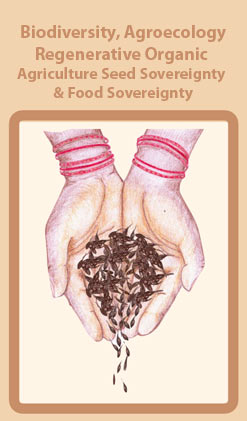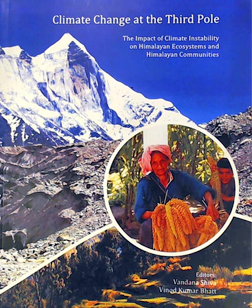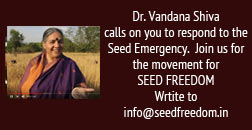Executive Summary
The Independent Peoples Tribunal on Land Acquisition, Resource Grab and Operation Green Hunt
Date: 9th to 11th April 2010
Venue: Constitution Club, Rafi AMrg, New Delhi
Central India is home to the Adivasis and Dalits, India’s first people. It is also home to the richest concentration of natural resources in the country.Today, as powerful Indian and global corporations race each other to gain control of the land, water, forest and mineral wealth of the region, this natural wealth has become a curse to these indigenous, but marginalised communities. What comes between corporate greed and natural resources are the tribals asserting their customary rights, right to life and livelihood, as well as their constitutional rights over the same natural resources. Corrupt corporations, joining hands with corrupt states, are helping destroy India's vibrant natural heritage and mineral wealth. Human rights abuses by police, paramilitary forces and state-sponsored militia are spreading in the name of Operation Green Hunt, which seems to make war against the very citizens it promises to protect.
A virtual information blockade prevents information from coming out of states like Chhattisgarh which are bearing the brunt of Operation Green Hunt. Our country needs to know the truth about such a massive war against our own people. That is why an Independent People’s Tribunal, consisting of eminent jury members, were called to hear testimonies from affected people, deliberate and submit a report on the matter to the public.
The IPT was organised by a coalition of civil society group which named itself Citizen’s Against Forced Displacement and War on People, of which Navdnaya was a core part. Its mandate was endorsed by 100 members of civil society representing different civil society groups (list attached). The jury of the tribunal consisted ofJustice P B Sawant (Former Justice Supreme Court), Justice H Suresh (Former Justice Mumbai High Court), Dr V Mohini Giri (former Chairperson, National Women’s Commission), Professor Yash Pal (Former UGC Charipman), Dr P M Bhargava (Founder of Centre for Cellular and Molecular Biology and former Vice Chairman, Knowledge Commission) and Mr. K S Subramanian (Former IPS officer). The tribunal held on April 9th to 11th, 2010 thus focused on the States of Chhattisgarh, Jharkhand, Orissa, and West Bengal which are bearing the brunt of Operation Greenhunt - the use of armed forces on the people of the gondwana region, a important tool of corporate profit making governance that India is following today. In particular, it examined human rights abuses, involuntary and forced acquisition of tribal land and mining in these areas by corporation who are hand in glove with the centre and the state governments in particular. The main areas of inquiry for this Tribunal were to examine the following inter related areas in the context of Adivasi Rights:-
1) Land Grab: Violation of India’s Constitution Undermining the PESA and Forest Rights Act
The Panchayat Extension to Scheduled Areas Act (PESA) was passed in 1996 and is a very important piece of legislation for Adivasis since the 73rd constitutional amendment established special provision for tribal peoples under scheduling. This Act extends Panchayats to the tribal areas of nine states, namely, Andhra Pradesh, Chhattisgarh, Gujarat, Himachal Pradesh, Jharkhand, Maharashtra, Madhya Pradesh, Orissa and Rajasthan, it intends to enable tribal society to assume control over their own destiny to preserve and conserve their traditional rights over natural resources. The PESA has been grossly violated and not upheld by many states, especially the minerals and natural resources rich areas
While the SEZ Act is a clearcut unvarnished example of land grab under government auspices, market forces have unleashed an unprecedented onslaught of land grab in many areas outside the SEZ framework as well. The laws intended to remedy the situation to some extent such as PESA and Forest Rights Act remain largely unimplemented. The other belated remedial moves such as the Land Acquisition Act (amendment) Bill and the Relief and Rehabilitation Bill fall far short of providing any real relief. The Adivasis are experiencing a profound disenchantment not only with the governments of the day but with the State of India.
Speakers like B.D Sharma a former IAS officer and Tribal Commissioner of India highlighted and drew our attention to pre independence era and reminded us “that it is a falsehood of history that the British ever conquered a tribal territory. Wherever they went, they were not able to gain any hard power in these areas and faced opposition from the people of these areas- men, women and children. Therefore when they had to accept and retreat what did they do? They declared these areas as partially excluded areas. What did this imply? It meant nothing to the people who repelled them but the British somehow created a façade by insidiously entering these areas and creating packed with some leaders. Thus they managed to declare these areas as British territories.” Independent India he pointed out is making the same mistake that the British made.
It was also pointed out that even though the Indian constitution in the 1970s recognized the nature of tribal land ownership and village republic as distinct from the rest of India it was only 1996 that this got formally recognized through the PESA. The major tenents of the PESA (1996) are:-
· Gram Sabhas can be held at the para, majra and tola levels.
· Gram Sabhas are empowered to protect the traditions, beliefs and culture of the tribal communities.
· Gram Sabhas have the powers to manage and protect common properties based on their traditional systems of management and protection.
· Local disputes can be resolved by the Gram Sabha through its traditional systems.
· In case of land acquisition the administration will seek permission from the gram sabhas for the rehabilitation of affected families.
· The Gram Sabhas will have the rights over minor forest produce, powers to restore land to tribals, control over money lending to tribals, control over social organizations working for the welfare of tribals and control over the local plans and sub-plans developed for the development of tribal areas and communities.
· The Gram Sabhas will exercise control over local markets and melas held within their jurisdiction.
- Gram Sabhas will have the rights to control the distillation and prohibition related to manufacture of liquor.
- The district panchayats will have rights and powers similar to the district panchayats falling under the Sixth Schedule.
One of the key reasons for the violation of the PESA is the understanding of what development means. In India currently it seems to be based on maximum exploitation of the natural resources, whether it be through extractions of minerals by mining or creating ‘modern infrastructure. This puts local communities (Grhram Sabhas) in conflict with state interests. Thus the question one faces is how much real power does a Ghram Sabha have, especially when the exercise of these rights come into conflict with state, center and forest department’s revenue schemes? It seems from the various case studies and testimonies given during the Independent People’s Tribunal that PESA becomes redundant in such situations. That ultimately the notion of maximum greed and extraction of natural resources seem to win over community rights and forest conservation. Thus the decentralized democracy which is how the indigenous people have practiced for centuries and which has been formalized by the constitution through the PESA hold no water when faced by the so called ‘development drive’ that the state is married to. This has led to the government forcibly acquiring land for mining and industries without the Ghram Sabha’s consent.
2) Human Right Violation
Right to life, to livelihood and way of life is one of the fundamental pillars of the declaration of Human Rights. In the land of Gandhi and Buddha where there is tradition of dialogue and peaceful resolution of differences in opinion only bullets and guns are being used to resolve the question of tribal rights and the vision of development which the Indian state is promoting.
Private companies, both domestic and foreign-- Jindal, Essar, Posco, Tata, Vedanta, to name a few -- are taking advantage of the opportunity. Capitalizing on the rampant corruption among politicians and the bureaucracy, wealthy corporations are able to sign Memoranda of Understanding with the government for purposes of acquiring land, forests and minerals for the profits of these private corporations in the guise of “development” by way of SEZs, mines and other real estate development.
In the process, tribal and rural people-- far from getting a share of the pie -- are being brutally driven from their homes and the land/forests they had helped preserve over centuries. The profits from exploitation of public land are filling the pockets of a small number of shareholders and do not proportionately translate into jobs, better public schools or healthcare infrastructure for the general public. Their right to life and way life is in serious jeopardy. In order to defend this right some may have taken to violence in order to be heard by a government deafened by the beats of glamour development. As both sides taken up violent means to make the other understand their point of view there is a spiral violence which has gripped the Gondwana region of India.
Dr Binayak Sen of PUCL highlighted the structural violence in these areas and how this has deprived a sizable population in these areas of their basic human needs. He said “The Home minister is giving arguments that unless naxals “abjure violence”, how can we develop these areas? But I will talk about an area where there is no violence at all. In Bilaspur the Jan Swasthay Sahyog (JSS) is a group of highly trained doctor and it, also has an epidemiologist amongst them. We have surveyed 10,000 people in these villages in Bilaspur—and measured the BMI (Body Mass Index).If the BMI in a population is 18.5, it signifies chronic under nutrition in the population. In Bilaspur villages, the mean BMI is 18.5. If you look at it over the year—in August, September ,October and November, when the rice stored from the previous year runs out, the BMI of the entire population takes a dip. It is already low, but it gets precariously low in these 4 months. This is the situation in the state with cheap rice. In Bilaspur, the malaria incidence rises precisely when the BMI takes a dip. The most important reason for acquired immunodeficiency in India is not HIV, but malnutrition. “
The loss of life on all sides whether it be on account government, government sponsored militia called the Salwa Judum or the Maoist and the tribals caught in the cross fire between them all along with the gross human rights violations that have been taking place in the tribal belt in order to uphold the MOUs need to be put under scrutiny. As the freedom of movement, expression and right to life all get threatened, it becomes imperative that such actions both by state and non state actors be analyzed and reprimanded. Testimonies from Chhatisgarh, Jharkhand, Orissa and West bangal highlighted this violation of human rights as people from these region related stories of unlawful detention by police forces. For example an adivasi man (name withheld for protection) testified infront of the tribunal jury and said “in In Dantewada, I was captured by the CRPF. I too was beaten up and was told that I was a naxal. I told them that I am a village representative and not a naxalite. Still they kept beating me, they kept saying that I have a rifle and ammunition etc. I could not bear it any more. So I told them fictional things to get some relief from the beatings. I told them so and so is a naxal in my village, even though I didn’t know anything. They would beat me everyday—where is the rifle, where is the bomb?, they would keep asking. For about 1 month, the villagers would keep coming and asking for me. They told the villagers that I wanted to be an SPO. They told me I would be shot tomorrow unless I told them about naxals. I couldn’t tell them anything. Eventually, I was set free. .I am a village representative. How can they beat us so much? The CRPF, Salwa Judum don’t let us live. People are fleeing. Someone leaves for Orissa, some one for AP.”
Fortunately, the spirit of freedom, equality and democracy that is ingrained into large sections of educated Indians has resulted in the formation of a number of peace and justice loving groups and activists -- they are the crucial watchdogs preventing India from sliding into a totalitarian state. However, government has begun targeting such groups labeling anyone who speaks up for peace and civil rights and against the security forces as a Naxal sympathizer. Consequences are criminal FIRs, jail, and even torture in custody. According to Kavita Srivastva of PUCL “there is a list of over 50 Draconian state laws which violate human rights and people are booked under these laws. These have been used against human right defenders unsparingly. For Example:-
1) Chhattisgarh Special Public Security Act of 2005 – where intent has been criminalized. Over 220 people in 2005 have been taken under custody booked under this law. Against 40 the RTI didn’t have a name. The first person to be booked under this was a 17 year old girl- alleged to be a Maoist sympathizer and to have sheltered her boyfriend. Others booked Binayak Sen, Ajay TG (film maker) and Sahai Reddy (journalist).
2) UPA and the Arms Act used in Jharkhand, Orissa and West Bengal especially in the case of movements challenging displacements. Abhay Sahu (PPSS), Seema Azad (PUCL) and Lenin Kumar (Journalist) have been booked under this.”
She further pointed out that the Patterns of arrest followed in most cases were:-
1. Individual tagged as Maoist or Maoist sympathizer.
2. Picked up one day while the date of arrest was shown as an other day.
3. Blind folded, beaten and taken to unknown locations.
She also emphatically mentioned that “the National Human Right Comission (NHRC) has failed to take action in most cases. Where does the human right worker. If our activity is going to be looked upon as criminal activities than who is going to look after enforcement of human rights? The government clearly is not upholding them. I implore this house to put pressure on the NHRC to evolve jurisprudence for human rights workers and defenders.”
If the things continue as they threaten to do, there is only one outcome possible: unprecedented bloodshed, large scale decimation and insurmountable alienation of the surviving original inhabitants of the Gondwana-- the origin, the nursery and the heartland of India as it evolved through the millennia. And then we will be graduating ourselves to the ranks of the developed countries such as USA and Australia with their bloody past of systematic decimation of the masses of the original occupants of those lands. But even that genocide far from quelling the Maoist mutiny is likely to exacerbate it. It is bound to lead to many more tribals joining the Maoists, leading to virtual civil war like conditions in many parts of the country.
3) Forced Displacement and Resource Grab
The mining expedition in the tribal belt spells disaster for the people of this region as tens of millions of original inhabitants of these forest regions are to be banished, to be rendered landless and homeless –as the forest is their home, their source of livelihood. According to the estimate of Asian Indigenous & Tribal Peoples Network (2008), a total of 4,01,425 tribals have been displaced due to the armed conflicts and ethnic conflicts across India. This included 47,940 Adivasis in Chhattisgarh,22 2,03,485 tribals (Bodos, Santhals and Garos) in Asom (formerly Assam), about 1,20,000 Gutti Koya tribals (from Chhattisgarh) in Andhra Pradesh and 30,000 Brus in Tripura. Numbers have only risen since then.
Advocate Sudha Bhardwaj highlighted this problem in the context of the state of Chhatisgarh. She said “when Chattigarh was formed, the idea was that the rich resources would be used for the common good of the people. A lot of aspirations were attached to the creation of the state. For example, 68% of the iron ore in the country belongs to Chattisgarh. But actually what has happened is that the corporations have taken over control in cooperation with the state government.”She also pointed out that, “From a legal perspective, the procedures which must be followed by these companies for obtaining land and resources are not being followed.” She told the tribunal that in Chhattisgarh’s Raigarh district there are about 15 lakh tribals (estimated) who will be without land entitlements and rights. Out of 12,000 villages, only 7,000 have so far applied for collective rights.
Arun Agarwal in his presentation showed the nexus between resource grab, mining and profits in these region which are now facing the brunt of operation Green Hunt and Maoist violence. He said “It is a universal fact that the map of naxal movement is virtually a carbon copy of the mines and mineral map of this country, it is also a fact that this movementcame into prominence with the increase in price of iron ore and other mineral from 2000 onwards. The position in 2000 was iron ore used to sell for rupees 300 a ton and the cost of extraction was rupees 250 a ton. There was marginal profit of 50 rupees per ton and hence there were not too many takers. Around 2002 down to now, except for the period of the economic depression the international price of iron ore shot up to 110 dollar FOB from India and 150 dollars spot for selling to China which is a major importer of iron ore. So suddenly the profit margin increased from 50 rupees to 5,000 rupees. It was at this point of time that the race for mines began.” Thus it becomes quite clear that the money that these companies are to make out of the royalties has a lot to do with who gets heard in this democracy and what we deem as development. Thus who ever comes in the way of these profit must be done away with.
Abhay Sahu the President of POSCO Pratirodh Sangharsh Samiti (PPSS) highlighted the rate and speed at which the land grab is taking place. He said in his presentation “I was originally not supposed to come to Delhi because the situation with Posco in Orissa is becoming tense. The state government signed an agreement with Posco. Immediately since then, the people have been resisting the setting up of these mega steel plants. Posco is about to acquire 4004 acres of farming land, they will extract 600 million tons of iron ore. These 4004 acres of land include forest, state government land, and private owned land. The Forest land is about 3000 acres. The main thrust of the struggle is for this forest land.”
Praful Samantrai too had a similar observation from his region in Orissa. He told the jury that “Vedanta is in company with the local officials and the Orissa government. They are trying to secure 10,000 acres of land to build a university. But, people have been resisting. These companies control not only politics, but they are also controlling the judicial system of this country. The people are resisting. However, in the last year 14 people have been shot dead.”
The nature of forced land acquisition through political and physical might was resounding in almost all testimonies in the tribunal. The other thing which became clear to the jury was that this is not a recent phenomenon but the age old dilemma of development module that India pursued after 1990s. In recent time the blatant disregard for the wishes of the people of these areas and their life however has become more and more apparent. Operation Green Hunt has catapulted this destructive logic to its ultimate demonic manifestation.
.4) Operation Green Hunt or the MOUIST Vs Maoist = Death of the Tribals
The heartlands of India are the lungs of the country as they are part of a vital ecosystem comprising of the water cycle and the forests that produce oxygen. They also comprise of the rich agricultural lands. For centuries, the indigenous communities have fought against the greed of the forest and timber mafia in order to conserve these forests and the rich mineral wealth within them.
However, with the opening up of the global market, the pressure on the State to hand over most of these areas to global corporations for mining and other ‘industrial’ purposes has increased. Private companies, both domestic and foreign— Arcelor Mittal, Jindal, Essar, Posco, Tata, and Vedanta, to name but a few – are taking advantage of the opportunity thus presented. This worldview of ‘Development and Globalisation’ has also become the mantra that is threatening people’s rights to land, resources and livelihood. The Adivasis are being forced out of their own homes and villages, where their communities have lived for thousands of years. This violation of the democratic and constitutional rights of indigenous communities has led to the present situation of conflicts.
The tribal people in India understand their relationship with the earth, land and resources quite differently from the modern nation state understanding of private ownership. For them land is not an individuals property. They understand land in the traditional framework of community ownership and individual use. This implies that the community is organized as village republics and has the final verdict on the use of land. This unique understanding and manner of governance was something that even the colonial rulers of India had to recognize. During the British Raj the general laws of the center or the provinces did not extend to these areas in routine. However today in a market economy driven polity with the emphasis on private ownership the tribal society as collective is under siege, as their understanding of nature, land and resources comes in the way of private profits and the so called development of the country. Thus hundreds of MOUs have been signed by the governments with private corporations for giving them lakhs of acres of tribal land and forests. The rationale given for this is that these industries will drive up GDP growth and provide jobs to the tribals. “You can’t keep the tribals in an anthropological museum eating grass” says Chidambaram, who has represented many of these corporations and was the director of Vedanta which together with its subsidiaries runs the largest mining operations in India.
Former Union Secretary SP Shukla shared his concerns about this operation Green Hunt at the tribunal and said “There is something rotten about this state of being. The stink is going to high heavens. The perception of this in the ruling classes is zero. I am not exaggerating it is clear when one reads the press coverage both English and vernacular. The articles are only repeating the government handouts about the ‘security threat number one’ and the terms being used such as – extermination of the security threat number one makes one wonder. When we read our political theory long ago Harold Laski told us about revolutions being foot notes to the theory of sovereignty. Today we are hearing about the monopoly of force being that of the state and any challenge to that has to be ruthlessly put down. That is the theory however we must also remind ourselves that this kind of reductionist approach to the theory of monopoly of force by the state has also its footnotes. The acquiescence by the ordinary people, by the deprived people in the armed uprising in their areas is a matter that should worry us. That should worry the ruling classes. Unfortunately I don’t see much evidence of that.”
Sharing the real story behind Operation Green Hunt Tribal Rights activist and writer Gladson Dung Dung said “Operation Green Hunt (OGH): first launched in East Singhbhum on 5th of March. On 7th of March, we witnessed the first case of human rights violation when the forces entered a village, went into the house, took all the rice grain and threw it on the floor. Took all the clothes and threw them on the floor. Took away the son of the family for questioning about being a Maoist. Next case, they went to a house and took away all their belongings including the BPL card, and now they have nothing to survive on. Third case that of a man buying rice and bringing it home, but was waylaid by security forces and taken away to the police station and harassed for carrying rice to the Maoists. Thus there are villages where no outsiders are allowed by the forces, so your family also cannot visit you.” According to Dung Dung it was strategy to squeeze the tribals of their land, as any economic activity done by the villagers are put under the suspicion of Maoism.
Pravin Patel from the Tribal Welfare Society also concurred with Dung Dung when he spoke about the situation in Datewada. He said “The MoU with Tata’s for a steel project in Dantewada was signed on 4th June 2005, and less than 24 hours later, the first rally of Salwa Judum was held. The reason is that under PESA, the approval is required from the Ghram Sabha—but the purpose of the Salwa Judum is to clear out the villages, so that gram sabhas can be easily manipulated. Of the 3.5 lakh people who were displaced by the salwa judum, a vast majority went into the forests and have joined the naxals.”
Thus through the many deposition presented at the tribunal it became clear to all that Operation Green Hunt was not merely a hunt for ‘exterminating security threat number one’ (the Maoist) but a hunt for India’s green biodiversity and mineral rich areas by the government in nexus with the private corporation who have the mining lease for these areas.
The jury after hearing the testimonies of a large number of witnesses over three days from the States of Chhattisgarh, Jharkhand, West Bengal and Orissa as well as some expert witnesses on land acquisition, mining and human rights violations of Operation Green Hunt came up with following observations:-
Tribal communities represent a substantial and important proportion of Indian population and heritage. Not even ten countries in the world have more people than we have tribals in India. Not only are they crucial components of the country's human biodiversity, which is greater than in the rest of the world put together, but they are also an important source of social, political and economic wisdom that would be currently relevant and can give India an edge. In addition, they understand the language of Nature better than anyone else, and have been the most successful custodian of our environment, including forests. There is also a great deal to learn from them in areas as diverse as art, culture, resource management, waste management, medicine and metallurgy. They have been also far more humane and committed to universally accepted values than our urban society.
It is clear that the country has been witnessing gross violation of the rights of the poor, particularly tribal rights, which have reached unprecedented levels since the new economic policies of the 90’s. The 5th Schedule rights of the tribals, in particular the Panchayat Extension to Scheduled Areas (PESA) Act and the Forest Rights Act have been grossly violated. These violations have now gone to the extent where fully tribal villages have been declared to be non-tribal. The entire executive and judicial administration appear to have been totally apathetic to their plight.
The development model which has been adopted and which is sharply embodied in the new economic policies of liberalization, privatization and globalization, have led in recent years to a huge drive by the state to transfer resources, particularly land and forests which are critical for the livelihood and the survival of the tribal people, to corporations for exploitation of mineral resources, SEZs and other industries most of which have been enormously destructive to the environment. These industries have critically polluted water bodies, land, trees, plants, and have had a devastating impact on the health and livelihoods of the people. The consultation with the Gram Sabhas required by the PESA Act has been rendered a farce as has the process of Environment Impact Assessment of these industries. This has resulted in leaving the tribals in a state of acute malnutrition and hunger which has pushed them to the very brink of survival. It could well be the severest indictment of the State in the history of democracy anywhere, on account of the sheer number of people (tribals) affected and the diabolic nature of the atrocities committed on them by the State, especially the police, leave aside the enormous and irreversible damage to the environment.It is also a glaring example of corruption – financial, intellectual and moral – sponsored and/or abetted by the State, that characterizes today's India, cutting across all party lines.
Peaceful resistance movements of tribal communities against their forced displacement and the corporate grab of their resources is being sought to be violently crushed by the use of police and security forces and State and corporate funded and armed militias. The state violence has been accentuated by Operation Green Hunt in which a huge number of paramilitary forces are being used mostly on the tribals. The militarization of the State has reached a level where schools are occupied by security forces.
Even peaceful activists opposing these violent actions of the State against the tribals are being targeted by the State and victimized. This has led to a total alienation of the people from the State as well as their loss of faith in the government and the security forces. The Government – both at the Centre and in the States – must realize that it's above-mentioned actions, combined with total apathy, could very well be sowing the seeds of a violent revolution demanding justice and rule of law that would engulf the entire country. We should not forget the French, Russian and American history, leave aside our own.
Recommendations:
- Stop Operation Green Hunt and start a dialogue with the local people.
- Immediately stop all compulsary acquisition of agricultural or forest land and the forced displacement of the tribal people.
- Declare the details of all MOUs, industrial and infrastructural projects proposed in these areas and freeze all MOUs and leases for non-agricultural use of such land, which the Home Minister has proposed.
- Rehabilitate and reinstate the tribals forcibly displaced back to their land and forests.
- Stop all environmentally destructive industries as well as those on land acquired without the consent of the Gram Sabhas in these areas.
- Withdraw the paramilitary and police forces from schools and health centres which must be effectuated with adequate teachers and infrastructure.
- Stop victimizing dissenters and those who question the actions of the State.
- Replace the model of development which is exploitative, environmentally destructive, iniquitous and not suitable for the country by a completely different model which is participatory, gives importance to agriculture and the rural sector, and respects equity and the environment.
- It must be ensured that all development, especially use of land and natural resources, is with the consent and participation of the Tribal communities as guaranteed by the Constitution. Credible Citizen’s Commissions must be constituted to monitor and ensure this.
- Constitute an Empowered Citizen’s Commission to investigate and recommend action against persons responsible for human rights violations of the tribal communities. This Commission must also be empowered to ensure that tribals actually receive the benefit of whatever government schemes exist for them.
The Independent People’s Tribunal took place from 9th – 11th April, 2010, at the Constitution Club, New Delhi. This was organized by a collective of civil society groups, social movements, activists, academics and concerned citizens in the country.


















